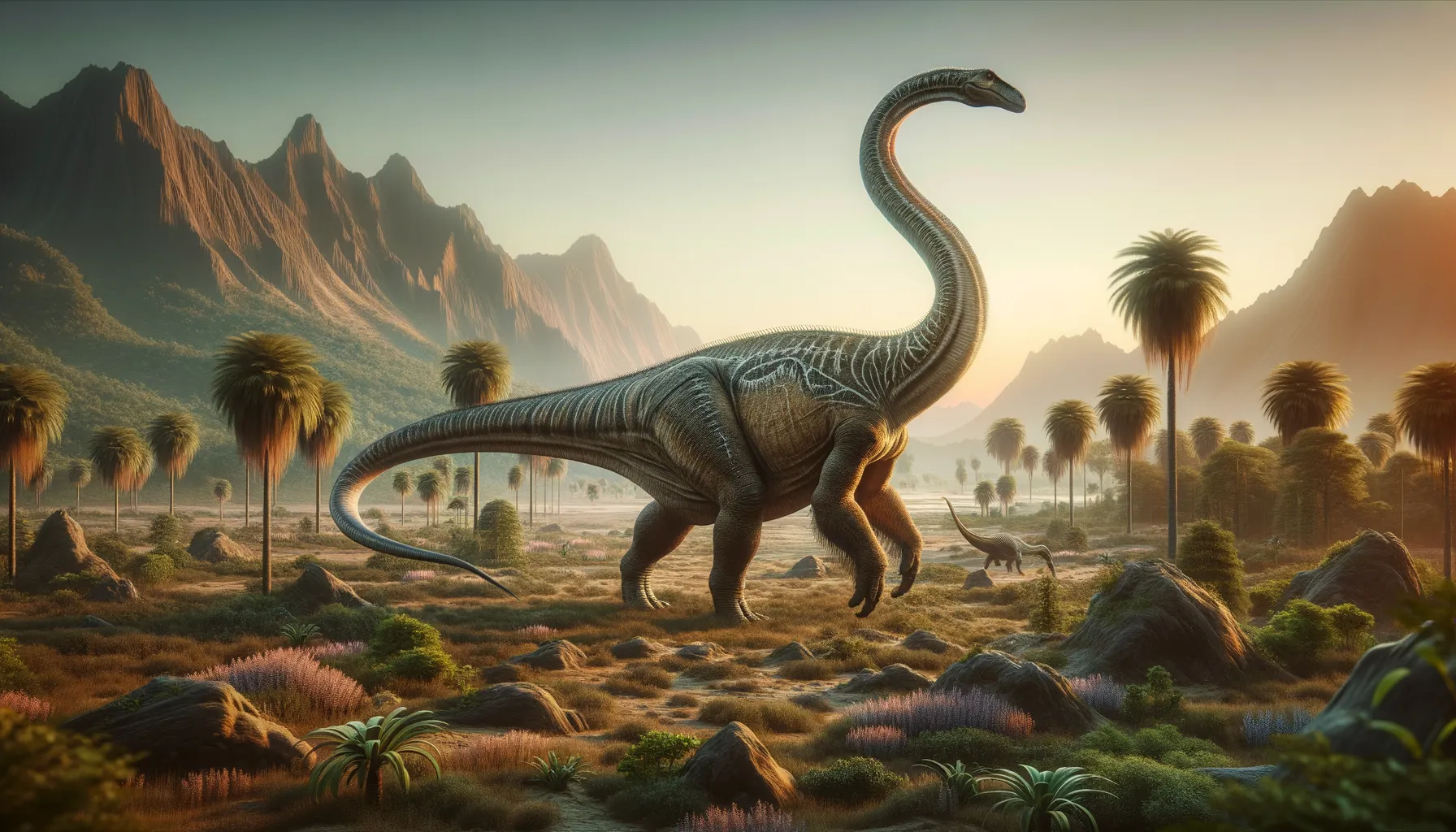
Yunnanosaurus
A journey from primitive to advanced giants.
Period
Jurassic
Length
Approximately 7 meters long.
Height
About 3 meters tall.
Weight
Around 1,700 kg (3,747 lbs).
Yunnanosaurus was a medium-sized sauropodomorph dinosaur, primarily known from the Jurassic period in what is now China. It is considered an early relative of the giant long-necked dinosaurs that would later roam the Earth. With a mixture of primitive and advanced features, Yunnanosaurus provides key insights into the evolutionary path of these remarkable creatures. Its teeth and jaw structure suggest it had adapted well to a herbivorous diet.
Diet
Yunnanosaurus was herbivorous, feeding mainly on plants available during its time. Its teeth were well-suited for cropping leaves and vegetation, indicating that it consumed a variety of plant material.
Hunting
As a herbivore, Yunnanosaurus did not hunt. It likely foraged in groups, relying on the abundance of plant life in its environment for sustenance. Its peaceful nature meant it was not a predator.
Environmental challenges
Yunnanosaurus lived in an era where it faced challenges such as changing climates and the need to adapt to diverse food sources. The region it inhabited was prone to seasonal variations, which could have impacted available vegetation. Predators were also a constant threat, pushing it to adapt in order to survive.
Speed
It moved at a moderate pace for a dinosaur its size.
Lifespan
Estimated to live several decades.
First discovery
Unearthed in China in the early 20th century.
Fun Facts
- Yunnanosaurus was a dinosaur that lived during the Early Jurassic period, around 199 to 174 million years ago.
- It was a herbivorous dinosaur, meaning it primarily fed on plants.
- Yunnanosaurus got its name from the Yunnan Province in China where its fossils were first discovered.
- An interesting feature of Yunnanosaurus is its long neck, which helped it reach high vegetation for feeding.
- It could grow up to 7 meters (23 feet) in length, making it a medium-sized dinosaur for its time.
- Fossils of Yunnanosaurus provide important insights into the transition of prosauropods to sauropods.
- Yunnanosaurus is one of the earliest known true sauropod dinosaurs, showcasing early evolutionary traits seen in later giant sauropods.
Growth and Development
Yunnanosaurus experienced growth spurts typical of dinosaurs in its classification, reaching full maturity in several years. It likely underwent significant physical changes during its development stages. This evolutionary journey was marked by adaptations for a predominantly herbivorous lifestyle.
Habitat
The dinosaur roamed in what is now southern China, a region that once featured lush forests and river deltas. These environments provided ample vegetation, supporting its plant-based diet. Seasonal variations were typical, shaping the ecosystem that Yunnanosaurus called home.
Interaction with other species
Yunnanosaurus likely coexisted with various other herbivorous and carnivorous dinosaurs. As a non-aggressive species, it mainly interacted peacefully, focusing on grazing. Threats from predators would have encouraged herd behavior as a defense mechanism.
Natural lifespan
Its natural lifespan could reach several decades under favorable conditions.
Reproduction
Yunnanosaurus reproduced by laying eggs, likely in nests built in secluded areas. Parental care might have been limited to protecting the eggs and newly hatched young. The reproductive strategy focused on producing multiple offspring to ensure survival odds.
Social behaviour
It possibly lived in groups or herds, which provided protection and facilitated effective foraging. Such social structures would have played a crucial role in maintaining population stability and dealing with predation threats.
Fossil locations
Fossils of Yunnanosaurus have been primarily found in the Yunnan Province of China. These discoveries contribute significantly to the understanding of early sauropodomorphs and their geographical distribution during the Jurassic period. Fossil sites give insight into the environmental conditions of that era.
